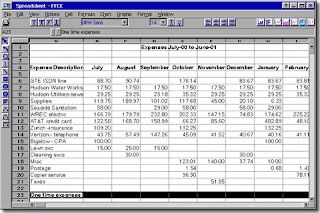 How do you work with a volunteer board to develop the Mission, Vision and Values statements for a charity in one day? You engage Fay Booker, that's how.
How do you work with a volunteer board to develop the Mission, Vision and Values statements for a charity in one day? You engage Fay Booker, that's how.
Last year I was invited to become the Treasurer at Ewart Angus Homes, which runs two Toronto facilities for people with Alzheimer Disease, Ewart Angus Home and Cedarhurst. The homes are based on the work of Dr. John Tooth, who found that while there was no cure for Alzheimer Disease, the dementia could be slowed down significantly if the following principles are followed:
- Residents should live in a house which as far as possible resembles the home they have lived in all their lives.
- Food must be cooked in each house.
- Each resident must have a single bedroom with private bathroom to which he or she may bring personal possessions and memorabilia.
- Residents should be able as far as possible to carry on the routines to which they have been accustomed.
- Each house must have its own secure garden in which the residents may wander safely.
- Each house must have a wet-weather wandering loop as well as provision for garden wandering in good weather.
- The number of residents in each house should be kept as small as economically practicable.
Like many charities, we have significant challenges, such as securing sustainable funding and keeping our volunteers from burning out. We also face the health care risks borne by much larger organizations, such as clinics and hospitals. We decided it was time to take a Saturday and come to grips with where we are going and how we will get there. One of our members recommended Fay.
I have been in visioning exercises run by professional facilitators before. What made this one different was:
- Fay has current, practical experience in our industry, and
- She was not afraid to park issues in order to keep the group's focus.
Other planning sessions I have been in have been bogged down by "wordsmithing", i.e. using the group's time to craft the exact wording. Fay focused on getting the common themes and ideas down on paper, then she had an associate put them together to form a working wording. We were thus able to push forward and leave the fine tuning for another day.
The result was that we actually finished a little early and all took away a plan to convert our good intentions into concrete actions. That reminds me, we have a Board meeting tomorrow and I have things to prepare . . .












